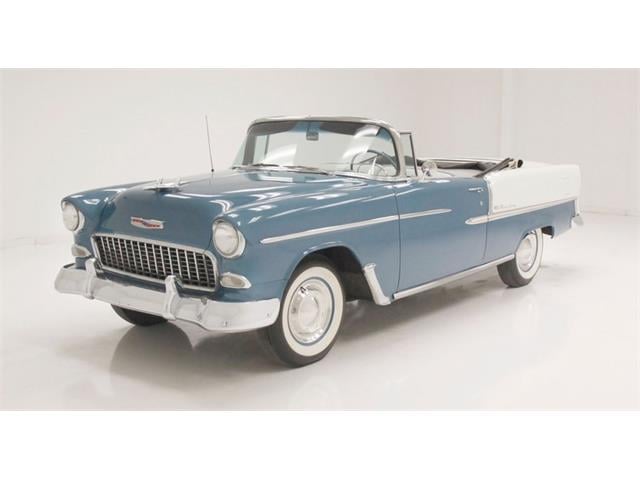
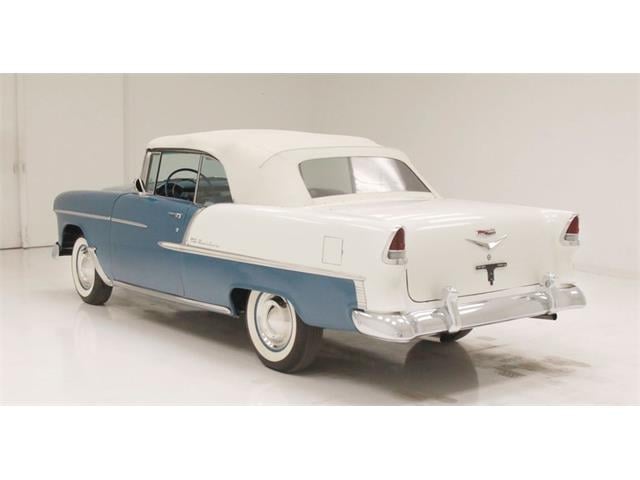
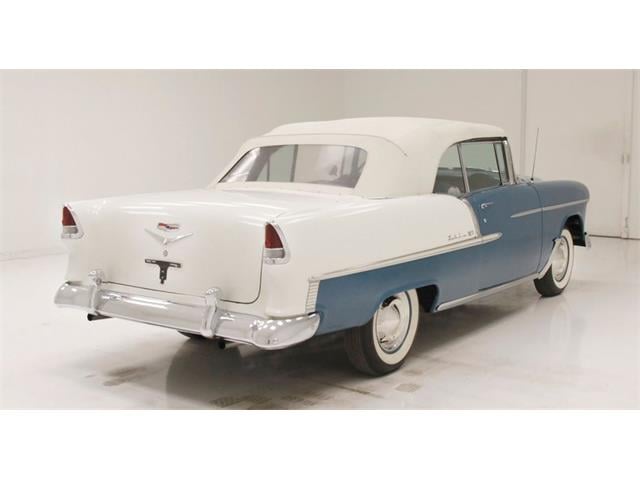
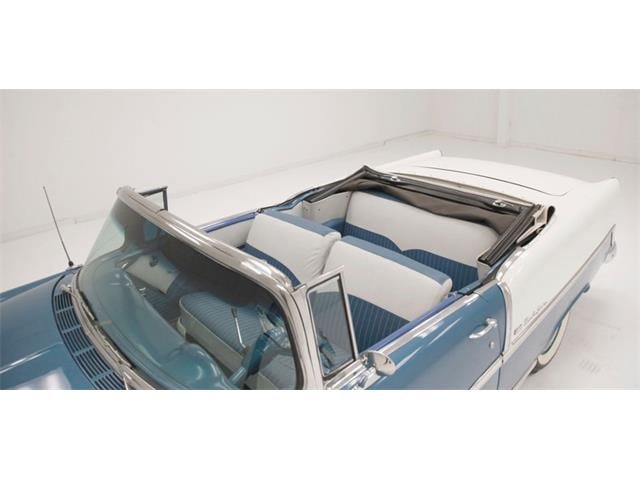
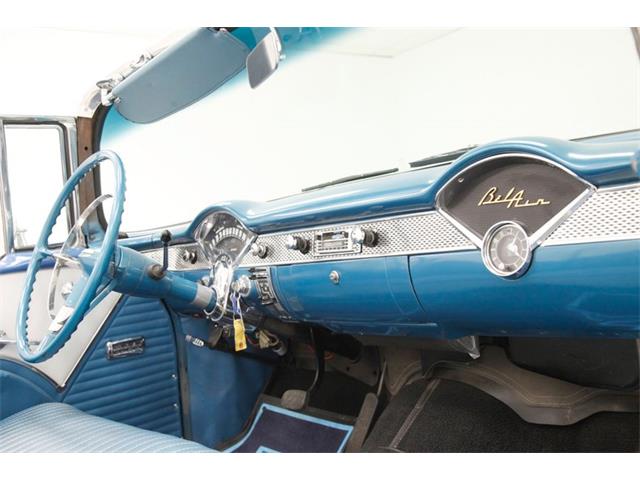
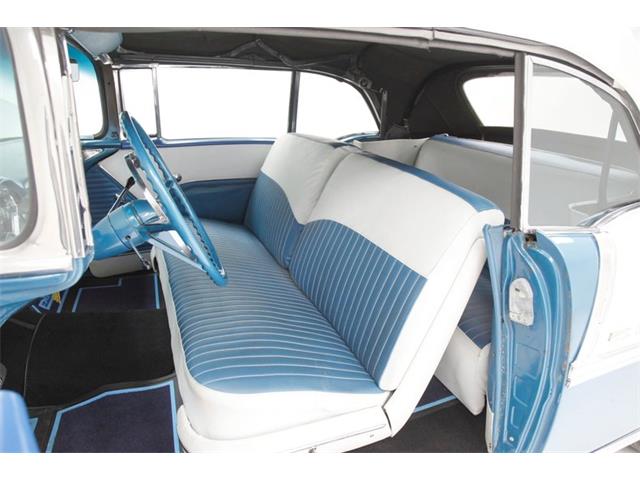
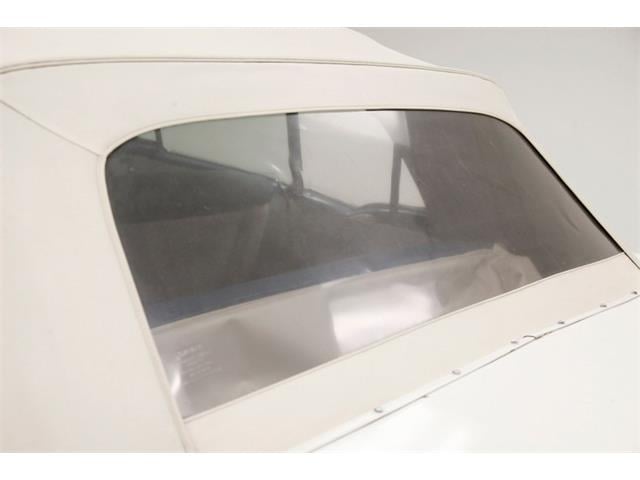
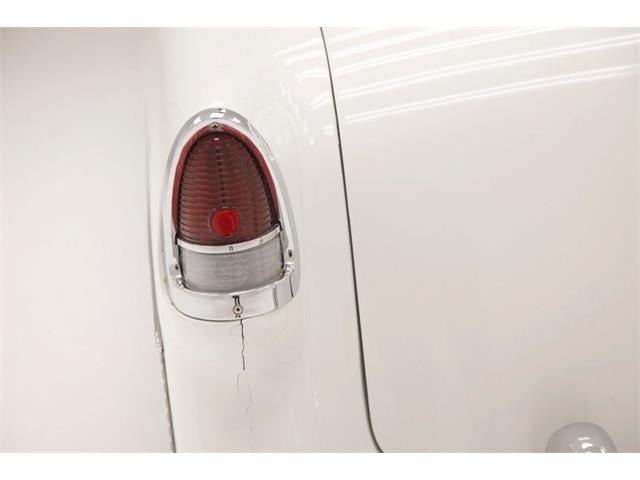
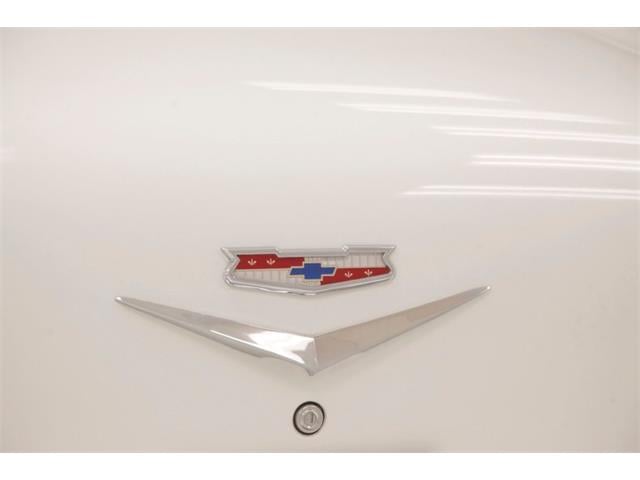
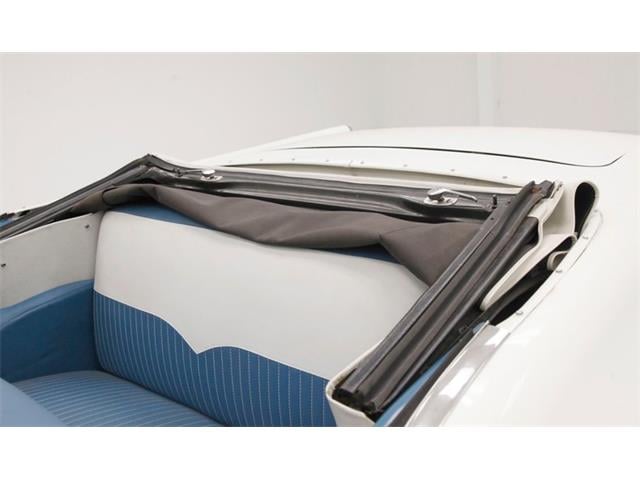
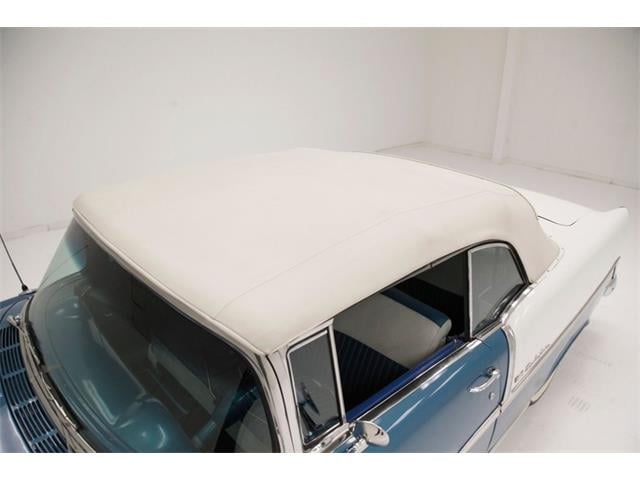
1955 Chevrolet Bel Air Convertible Imagine a car so popular that a new term came to be based on that design. That name is Tri-Five, which refers to 1955, 1956, and 1957 Chevrolet automobiles, in particular the Bel Air, 150, 210, Hardtops, Sedans, Wagons and the Nomad. With beautiful proportions and new skins each of those successive years, and a thorough peppering of chrome, these cars produced in this time became iconic. From all original to highly modified versions, many Tri-Five clubs have sprung up to showcase individuality, originality, and the beloved Chevrolet concepts of Harley Earl and his team. Wooing you in the configuration of its original form, a first year example of the Tri Five phenomenon that was about to hit the country with this 1955 Chevrolet Bel Air Convertible. A body off restoration was completed in 1995 and a mere 122 miles added to the odometer since it was completed. A few issues are present on this drop top dream, but they dont come along every day, as a matter of fact this is only the second 1955 Chevrolet convertible to grace our hallowed halls over the years and thousands of cars through our inventory. Exterior Mostly straight steel panels make up this 1st year Tri-Five which display with ill fitted gaps, particularly on the trunk lid, hood, trimmings and doors. It shows cracking, crazing, and solvent pop, along with some dimpling. From a distance all this disappears, and just shows as overall presentable and the saturation remains good. Upfront starting with its baseball cap brimmed headlights, to the egg crate grille, and large lower bumper there is plenty of chromed trimmings to go around on this car. No panel has been left wanting for trim, as on the front quarters, there is the beginnings of the trim spear and mid panel, and below on the back of the wheel well, is a trimming that starts within the wheel well surround and makes its way rearward on the rockers. Mid door where the front spear ends, picks up with another trim spear that eventually will end on back, but is now the dividing line between the deep Harbor blue, and the bright white. A vertical chromed faux vent (if you will) provides the delineation between the side panel blue and white...OH!! those were the days. Not to be outdone by the front, piqued lantern style taillights frame the rear on either corner and frame the cloisonne badge and bright silver V in the center of the trunk lid. A snug fitting rear bumper is present down low and noticeable cracks in the body are seen just below the taillights. White canvas in pretty clean and unripped shape moves up and down electrically while you sit and watch in amazement. Moon capped center deep dog dish style wheel covers cover wide whites all around completing the 50s look. Interior A swing of the large doors, and we have yet another swoop spear trimming which creates the border between the white and blue vinyl that makes up the door panels. Just a bit of soiling is on the high use areas of this door panel and we note 4 switches to control the power windows. Moving inside we see more blue and white vinyl, blue for the tuck and roll inserts, and white for the bolsters and frame of the seat surround. This stays the course in the back bench which has a blue vinyl lower, and a "bracket" style white curved upper motif, to all the seats, all of which are beautifully recovered. An original dash in blue steel stretches from door to door and includes dual fan-like bump ups, one to house the speedo and gauge cluster, and the other for the radio speaker with Bel Air badging in your grandmothers handwriting. An original blue bakelite steering wheel with a full round horn trim in the center and pointed center, fronts the dash. Beautiful black carpet floods all the floors and beneath the Bel Air scripted mats, has nary a mark on it. In the central portion of the dash within the bowtie pattern aluminum strip is an AM/FM/Cassette radio. Drivetrain A nicely buttoned up orange painted V8 configured in a 265 V8, has a Rochester 2-barrel carburetor atop. This rests in a slightly dusty but well restored engine bay. A 2-speed automatic Powerglide transmission is on back and sends power to a 3.36 geared rear axle Undercarriage All painted black and all rust free from all that climate-controlled storage over the years, this beauty underneath is very sound structurally. Independent coil spring suspension is upfront, and leaf springs for the rear, as well as drum brakes all around. The X frame is looking good as are the floorpans and wheel wells. Dual exhaust has been added to expedite spent fossil removal. Drive-Ability She fires right up, and has a slightly rough idle, possibly from storage, old fuel and the need for a tune up. Off to the test track it performed as it should with decent acceleration, good handling, and quick stopping with those drum brakes. During my tenure behind the wheel I noted the wipers did not function and the radio turns on but emits no sound.